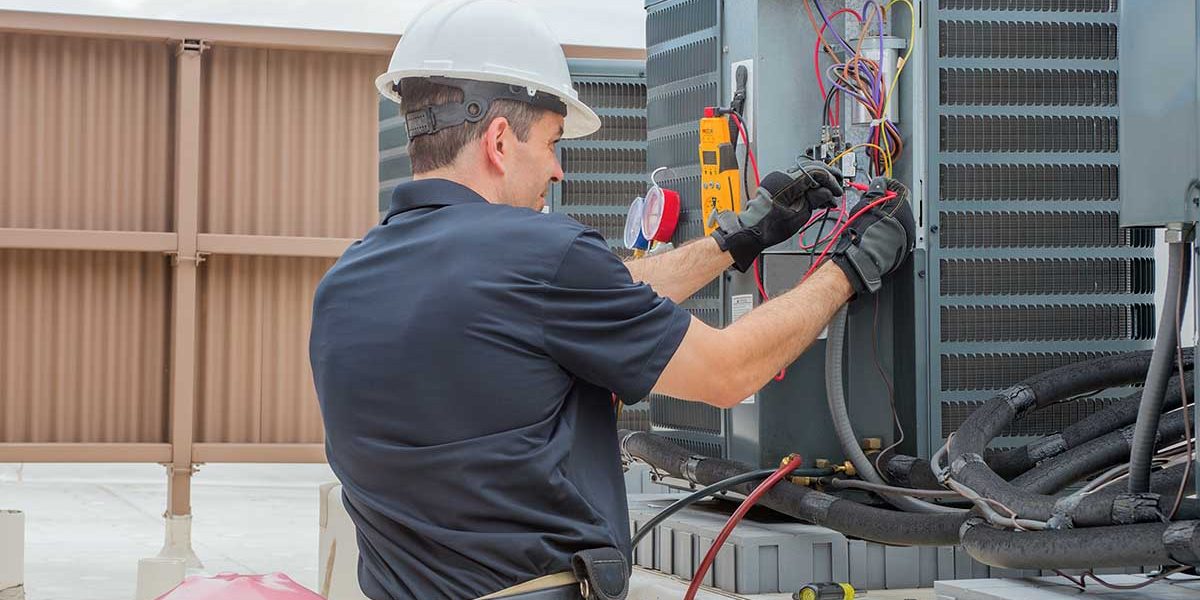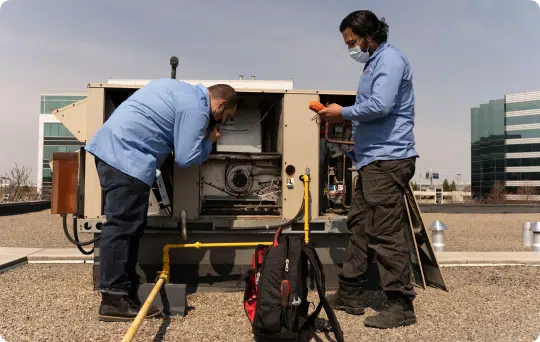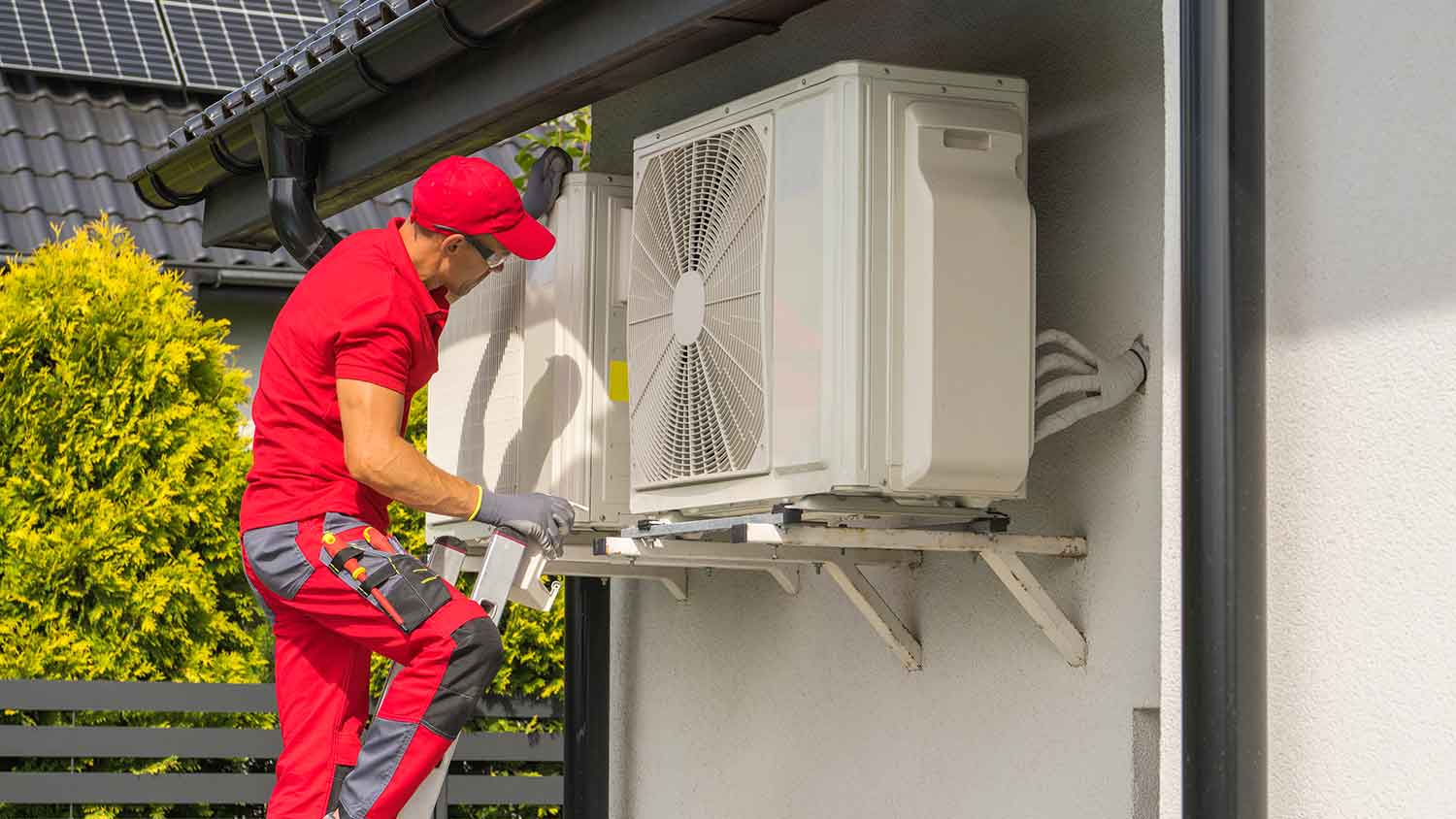Why Selecting a Trustworthy Brownwood TX HVAC Contractor Is Critical for Your Comfort
The Importance of Heating And Cooling Setup: Key Factors To Consider for a Comfy Indoor Environment
The setup of a heating and cooling system is a vital element in attaining an energy-efficient and comfortable interior environment. The process includes several nuanced considerations that go beyond just selecting a system off the shelf. Variables such as the suitability of the system for particular building demands, right sizing to prevent inadequacies, and the experience of contractors for a high quality setup play essential duties. The adoption of sophisticated modern technologies can considerably boost system performance. Comprehending these intricacies is simply the start of making sure optimal indoor convenience. What are the essential elements that determine successful HVAC application?
Picking the Right System

When picking a cooling and heating system, it is crucial to review the capacity required to efficiently warmth or cool down the area without straining the system, which can lead to increased wear and functional prices. Consulting with an expert cooling and heating specialist can supply valuable insights into selecting a system that aligns with both the architectural design and the awaited use patterns of the building.
In addition, thinking about the combination of smart innovation can boost system administration and monitoring, supplying higher control and possible price financial savings. By thoroughly analyzing these elements, one can guarantee the choice of a heating and cooling system that not just satisfies immediate needs however also adds to long-term operational sustainability and passenger convenience.
Recognizing Power Effectiveness
Comprehending power efficiency is necessary when thinking about an A/c setup, as it straight influences both the environmental footprint and the functional costs of the system. The effectiveness of a Heating and cooling system is generally shown by ratings such as SEER (Seasonal Energy Performance Ratio) for air conditioners or AFUE (Yearly Fuel Use Effectiveness) for heaters.

Buying an energy-efficient cooling and heating system not only converts to set you back financial savings however also adds positively to environmental preservation by lowering greenhouse gas emissions. In addition, many territories use incentives or refunds for the installation of high-efficiency systems, better boosting their financial charm.
When evaluating power efficiency, take into consideration sophisticated features such as variable speed electric motors, clever thermostats, and zoning capacities. These technologies improve the system's ability to get used to varying need, therefore maximizing energy use. It is vital to consult with a/c specialists that can offer insights right into the most effective options tailored to details climate problems and use patterns, making certain maximum efficiency and convenience.
Significance of Correct Sizing

On the other hand, an undersized cooling and heating system will certainly struggle to get to the preferred temperature level, particularly during severe weather problems. This can result in constant operation, leading to higher power costs and possible overheating of system parts. Furthermore, inadequate sizing can cause inconsistent temperature level distribution, creating certain locations of a building to be also awesome or also cozy.
To accomplish the correct sizing, a detailed load estimation is important. This includes assessing different variables such as the building's square video footage, insulation degrees, window types, and neighborhood climate conditions. By precisely determining the heating and cooling down demands of a space, heating and cooling specialists this content can recommend systems that guarantee reliable procedure, reduced energy usage, and boosted indoor comfort.

Making Sure Top Quality Installment
A seamless Cooling and heating installment is the keystone of a system's durability and efficiency. This expert need to have in-depth expertise of varied systems and be adept at analyzing the certain needs of the structure.
Proper installment exceeds mere positioning of equipment. It includes precise calibration to make certain ideal air movement, effective power intake, and uniform temperature level distribution. This consists of accurate ductwork setup, ensuring connections are safe and leak-free, which is critical for preserving system performance and indoor air top quality.
Furthermore, the application of innovative diagnostic devices throughout installation can find potential problems early, protecting against costly repair services and expanding the lifespan of the system. The specialist needs to also guarantee that all elements are suitable and that the system adheres to regional building regulations and laws.
Regular Maintenance Practices
When the structure for a high-performing a/c system is developed with high quality setup, the focus ought to shift to regular upkeep techniques to make certain ongoing effectiveness and dependability. Routine upkeep not just prolongs the life expectancy of the system but also boosts interior air high quality, decreases energy intake, and stops expensive repair work. Important upkeep jobs include routinely changing air filters, cleansing evaporator review and condenser coils, and checking the system for clogs or leaks.
This basic job can considerably enhance air circulation and system efficiency. In addition, professional specialists must inspect the system yearly, examining for cooling agent levels, electrical links, and total system efficiency.
Interest to ductwork is additionally critical; sealing and cleaning up air ducts regularly avoids air loss and contamination. Applying an upkeep schedule guarantees that minor problems are resolved prior to they rise, safeguarding the system's operational stability. By adhering to these upkeep methods, home owners can maximize their HVAC system's functionality and maintain a comfortable indoor environment year-round.
Final Thought
By choosing an appropriate system customized to particular structure demands, understanding power efficiency, and making certain appropriate sizing, inadequacies can be lessened. The participation of proficient contractors warranties quality setup, while the integration of sophisticated modern technologies improves system efficiency and monitoring.
A number of kinds of Heating and cooling systems are readily available, including split systems, hybrid systems, duct-free systems, and packaged home heating and air systems, each with distinct advantages and constraints.
Understanding energy performance is crucial when thinking about a Cooling and heating installation, as it directly influences both the ecological footprint and the operational expenses of the system. The performance of a HVAC system is usually shown by ratings such as SEER (Seasonal Energy Effectiveness Proportion) for air conditioners or AFUE (Yearly Gas Utilization Efficiency) for furnaces (lawn irrigation installation Brownwood TX).When the structure for a high-performing A/c system is developed via top quality installment, the emphasis needs to change to normal upkeep techniques to make certain ongoing performance and integrity. In addition, specialist specialists must check the system every year, inspecting for refrigerant levels, electrical links, and total system efficiency